Vision Thing: Our auto design insider answers your questions
Hello there! My name is Adrian Clarke. I am a professional car designer, earning a degree in automotive design from Coventry University and a Masters in Vehicle Design from the Royal College of Art in London. I worked for several years at a major European OEM. and in the Nineties, I daily drove a 1979 Ford Thunderbird while living in London.
I’ve been writing design articles for Hagerty these last several months (you can find them here) and it’s my pleasure to welcome you to my new column: Vision Thing. In the media there seems to be a lack of understanding about what car design is, why it’s important, and what it contributes to the stories of the vehicles we love so much. Here, we will talk about a lot more than how to draw pretty cars. We will cover design history, philosophy, influence, analysis—the sort of subjects from the sort of perspective you aren’t likely to find elsewhere. It’s, well, a Vision Thing.
A while back, I invited you to ask me your questions about car design. We’ve had some great responses, and I’ve collated the best and answered them here. Some of the questions may have been edited for clarity. Now, on to the questions!

Q. Do you feel that once EV models get more efficient that we may see the styling get a little more interesting and sacrifice some Aero Count for appearance? If a battery can get 600 miles will we see cars again like we once had where they were styled for style not miles or MPG? – hyperv6
One of the big myths surrounding EVs is that because they don’t have an ICE and traditional multi-speed transmission, designers will be able to have a lot more freedom to create new and exciting vehicle shapes and categories. I’ve seen a lot of ill-informed opinions about EV “skateboards.” It’s mostly nonsense.
EVs still have a lot to package: batteries, inverters, on-board chargers, transmissions, power control units, and so on. And you still have to find room for all the stuff a regular car has. That means HVAC, instrument panels, suspension, brakes, steering, interior, et cetera. Tesla has set the expectation that every EV should have a frunk. But compare an early Model S to a new one and see how much the frunk has reduced in size.
So I think we are more likely to see a tweaking of existing shapes—something like the Jaguar I-Pace, which has a big passenger cabin for its size. In the far future when we have gotten over range anxiety and there’s a charging station on every corner, it’s likely that OEMs will start to use appearance and materials as a key brand identifiers again, if only because one EV will drive much like another.

Q. Knowing that automotive design studios typically start with multiple concepts by multiple designers, what it is like when your design is not chosen? Is it a blow to the ego or do you just have to accept it and move on? It seems to me that it would be bitterly disappointing. – buellerdan
In some ways, when a young sketch monkey comes up with their designs, they are not designing for themselves or the customer; they are actually designing for the chief designer. After all, the chief is the one who picks what will go ahead. A good chief designer has a strong sense of what will resonate with customers and what fits with the brand. But likewise, a talented young designer should have conviction in their work and should be able to argue why their design should be picked. In an ideal world, these two ideas shouldn’t be that far apart.
That being said, young designers should be able to take direction and be attuned to the market. The young designer’s job is to come up with many ideas. They won’t all be accepted. A studio is no place for ego, which is why it is important for a designer to be able to handle rejection and take constructive criticism. You have to be able to fit in and get along. Of course, if you’ve been at a company for years and you’re not progressing, then it’s probably time to leave—true at any company.
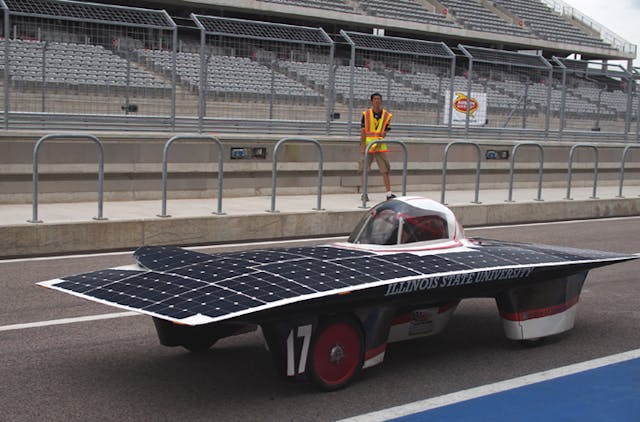
Q. Why can’t the exterior surface of vehicles be made of a material that converts sunlight to produce sufficient energy to run the vehicle? – karofsky
The average solar radiance (the incoming energy from the sun, accounting for variations in latitude and sun position) is about 340 watts per square meter, so it’s nowhere near enough to charge—let alone power—an EV, even if it was covered in solar panels.
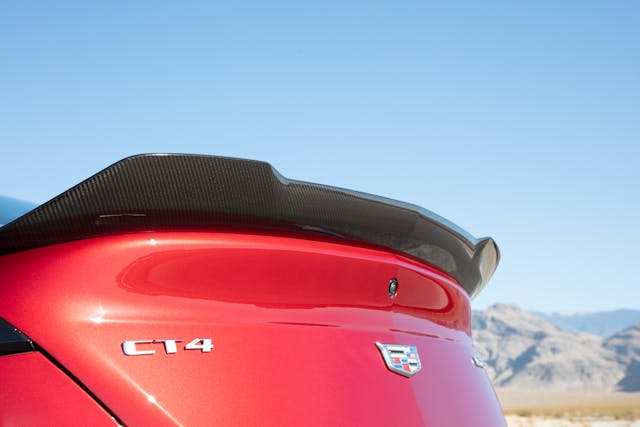
Q. I have always wondered about rear spoilers as an add-on extra on cars. Do these devices actually do anything for handling/performance on the street, or are they an extra cost profit item for the manufacturer? – Uncle Jim
Both. They absolutely do have a tangible benefit on high-performance cars, as well as providing model differentiation between the base and high-performance versions. Aero forces come into play on a road car at about 50-60 mph, so for any car that travels above that for a significant amount of time you want to “spoil” the lifting forces acting on the body, and in some case provide negative lift (downforce). They do of course increase drag (which increases to the square of speed) which is why only higher-performance cars have them.

Q. What is the ratio of qualified applicants to (car design) positions? Does one have better odds of being an NFL quarterback? – TG
I see you’ve read the same article I have. If we assume the minimum requirement for entry is a master’s degree (and we should) then across all the appropriate art schools worldwide the total number of graduates is probably fewer than 300 per year. There are certainly not 300 entry-level jobs advertised every year, but not all roles are advertised. Some, like myself, will be directly hired from college. In my graduation year around half of us got jobs, but not all were with OEMs. Some went to transportation start-ups, tech companies, Tier 1 suppliers, and so on. You have to be open-minded about what will be available to you. A lot of non-automotive companies are looking for transport design grads at this very moment, so if you are not fixated on working for an OEM you stand a much better chance of getting hired somewhere.
Q. One more which may be more in your wheelhouse… is it aerodynamics, cost, regulatory requirements, or poor taste of average consumers that make most modern cars so bland looking? – TG
I don’t think it’s fair to say modern cars are bland; there’s a terrific variety out there at the moment if you look for it. However, some certainly look similar to one another. I don’t think this is a new phenomenon; compared to cars of the past, today’s vehicles are indeed more subdued, but if you traveled back in to the expressive Fifties or muscle-car-packed Sixties, to the uninformed consumer many would also look similar to each other.
Aero and regulatory requirements do play some part, but not as much as you would think. Aero is considered only after the design is frozen; it’s about lots of incremental gains rather than the overall shape. Think flush glass, undertrays, hidden wipers—things like that are where aero is gained or lost. Take a look at the mirrors on a Polestar 2. They are frameless, and the whole mirror head adjusts. This means they are smaller but have a bigger glass area for better visibility. This is a supplier-led development for improving aero.

Q. Do designers have any influence over paint color? Are today’s bland colors just a reflection of today’s culture, everyone trying to be thought of as being part of a perceived cool clique, afraid to step out from the herd? – CitationMan
The Color, Materials & Finish Team are responsible for a car’s palette. Their selection will be based on a number of factors based on appropriateness for the market segment, brand identity, supplier availability, the number of colors the paint booths at the factory can manage, marketing considerations, and what suits the car.
Of course, the chief designer always has the final say. Ever since OEMs discovered leasing, a further consideration is resale—no one wants to buy an off-lease hot pink Kia Optima, I’m afraid, even though it’s the original buyer’s favorite color. Smaller, funkier cars aimed at a younger market may have a more vibrant selection; in Europe that’s certainly the case. Premium makers tend to stick to classier metallics but will offer custom colors for a price (normally because the car will have to be cycled off the line to be painted). Cars that trade on heritage or boutique appeal usually have bolder color options: Mustangs, Broncos, Challengers, and the like. But very generally speaking, the mainstream tend to be quite conservative and not want to stand out.

Q. Why do just about all crossover SUV’s look the same no matter what make? The humped up back ends look ridiculous. They all also remind me of a cricket (insect, not car) with that goofy looking brow over the back glass. It is sure not to help keep the back clean. My daughter’s 2019 Jeep Compass gets filthy back there, especially on gravel roads! – NHO
The spoiler over the rear glass (extending in a straight line from the roof) is there to reduce drag. More specifically, it’s about making the flow separation happen further away from the rear windshield, rather than having the boundary layer stick to the rear glass and tailgate, increasing friction. As a side effect they are meant to help keep the rear glass clean, but as your daughter has discovered this isn’t always the case! The shape of CUVs and SUVs is a consequence of their packaging, especially if they have three rows.

Q. Within the past few decades, it seems that cars have become designed less by engineers and more by accountants. So I guess the question I really want to ask is: does the job entail designing really interesting cars (think new-age Japanese design with the new GR Yaris, 2023 Z, Civic Type R, etc.), or do you spend a lot of your time designing econo-boxes like SUVs and minivans, where the market is? – Christopher, via email
I often hear or read that companies design and engineer in obsolescence and build things as cheaply as possible. This is simply not true. Cars are the most complicated and expensive consumer-grade product you can buy, and the profit margins (for the mainstream OEMs) are less than 10 percent. Could companies make a mass-market car that lasts 2 million miles, gets 50 mpg, weighs less than 2000 pounds and yet is still legal? Possibly, but it would cost $250K, factories could only build 20 examples a week, and it wouldn’t sell.
Some companies place a very high value on design and that is reflected in their corporate structure. Some don’t, and design will end up subservient to other priorities: value for money, build cost, performance, time to market, reliability, et cetera. A company like Toyota doesn’t sell cars on the basis of their design—they sell on other characteristics.
You’re going to end up designing whatever the company you work for makes, and whatever your manager asks you for. That being said, if a designer has a spare hour or two they may design something for fun and keep it in a drawer. Most big OEMs have or have had a pretty broad spread of vehicle types, so there’s always a chance they may want to revisit something they don’t currently build.
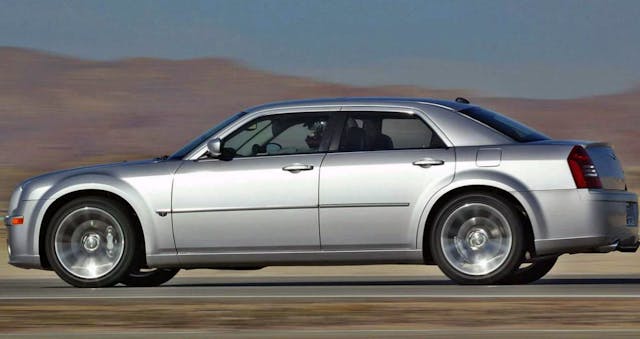
Q. The one that plagues me is why windows are so small on most modern cars. Part of the reason that I love vintage cars from the ’60s and early ’70s is that the side windows were set from a much lower point to a much higher point on the car. Range Rovers and BMW SUV’s continued this style at least into the ’90s, but even these SUVs have a lot less glass than they used to. So where did all the side windows go? Is it style, safety or some sort of structural issue that has pushed windows to the slits that we now have? Will I ever be able to drive a modern car again with my forearm resting on the top of the open side window again? – Tim, via email
This is a question I see a lot. The short answer is yes, belt lines have risen. This is driven by exterior styling, but also by the fact that customers like to feel they are sitting in, rather than on, the car. They like the feeling of security. That’s not the whole story, though. In the past, the door structure contained the regulator for the window, the locking mechanism, maybe one speaker and if you were really fancy, a mirror adjustment mechanism. These days there is much more to package into a door: power locks, power windows, multiple speakers, additional sound deadening, side impact bars, and airbags. Plus you still need to provide room for the glass to drop, and the door itself needs to be much thicker for strength. So, packaging is a secondary reason for higher belt lines.
At the moment active safety systems are all the rage, but I do think in time we will see the limits of these systems and return our focus to passive safety—namely visibility. It’s worth noting there is a lot of legislation around visibility, but you can still make cars that sacrifice good vision for style, like the current Camaro.

Q. Forever, it seems, we’ve seen exciting – and sometimes “far out” Concept Cars at shows, etc. Then we see stories that contain the caveat: it remains to be seen what changes will need to be made in order to get this vehicle into production. And generally, the production model is fairly heavily changed, if not nearly totally redesigned, before release. So, if the design team knows that a concept isn’t likely to be production-ready, and the design will need to be heavily modified, why do it that way? Why not make Concept Cars that are designed so that a factory can actually make them and sell them? Seems to me that a ton of time, energy and money are expended on building a one-off that jacks up the public’s expectations, only to be largely re-done before the first actual car can be fabricated. – Lynne & Curtis, via email
This is probably the most common criticism I see of concept cars. It’s an absolute whopper of a question that really needs a full article to answer properly, so that’s what I’ll do. Hang on for that one! I hope you enjoyed this Q&A session and found it useful and enlightening. If you still have questions, I still have answers. Take for example:
- If you’re dying to know why the hood has a much wider shut line than other panels, it’s because the hood has what is known as an “overslam” condition; i.e. the hood, when being slammed shut, travels past its resting (or nominal) position to latch, and then springs back into place.
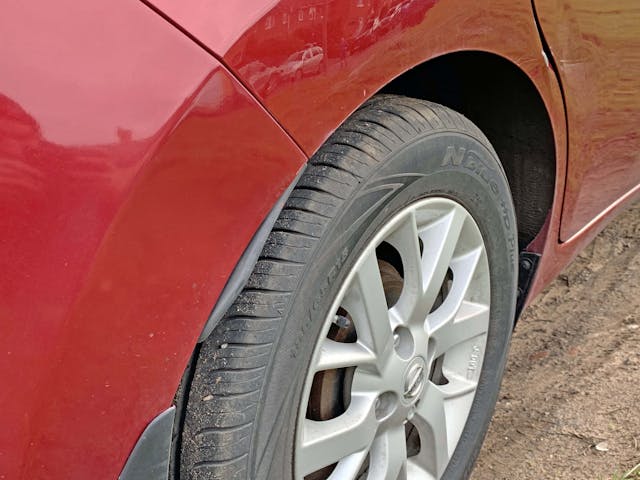
- The reason for those little fillips you sometimes see on a car’s rear wheel arch is a legal trick to make sure it meets tire coverage requirements (in the EU it’s 30 degrees forwards and 50 degrees rearwards of the axle center) and the tire doesn’t protrude outside of the bodywork—important on cars that taper at the back.
If you still have questions, jump into the comments or email me at this address at your convenience with your query.
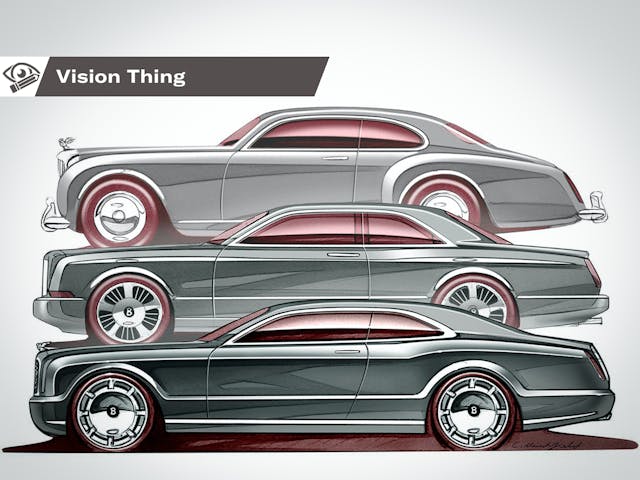


Hi there. I just want to ask you about the design of the the Queens Bentley State Limousine. In the Bentley website it says that the State Limousine design was takem from Arnage. But I cannot see even a shadow or similarity of the state limousine and Arnage. My question is where did the guys from Bentely take the design of the Bentley State Limousine
What is your average day schedule? What is your day useally like? What do you useally wear? What do you enjoy about your job? What are your hours like for your job? What kind of starting position and salary would someone entering this field be most likely to find? It would be very helpful if you answered these quetions for me because I am doing a school project and these questions are needed to be answered.